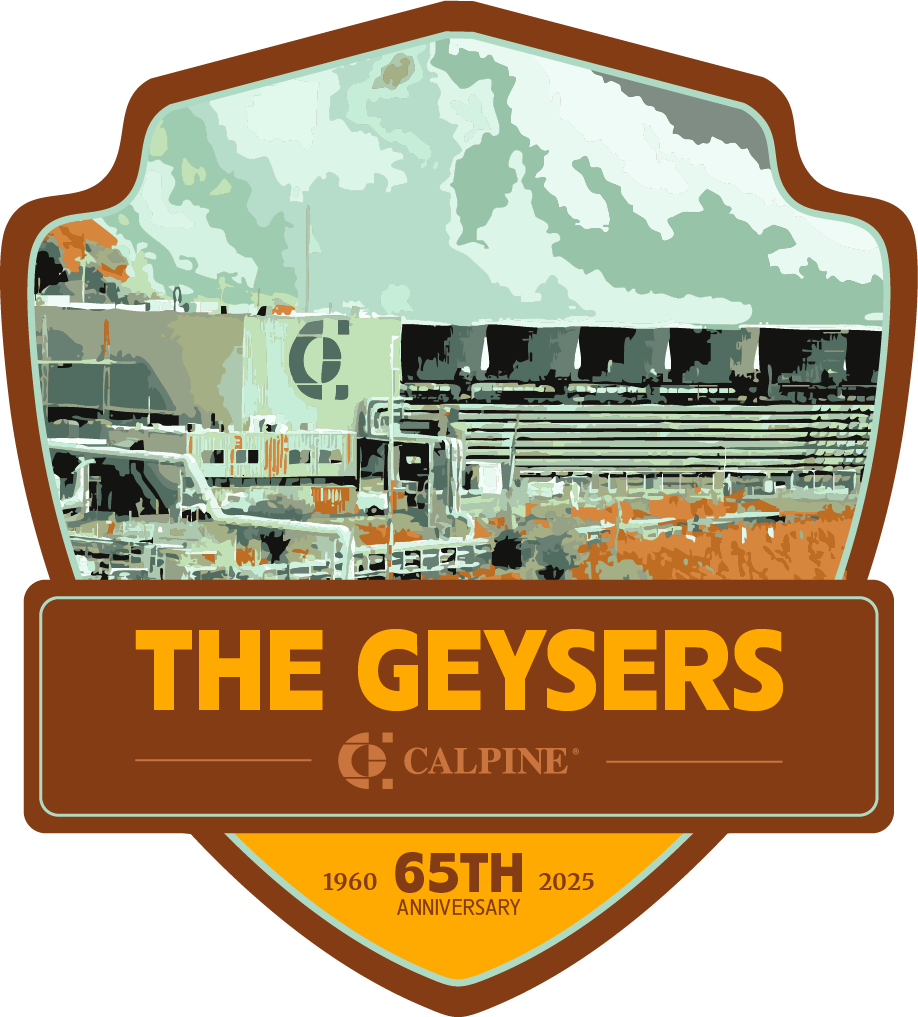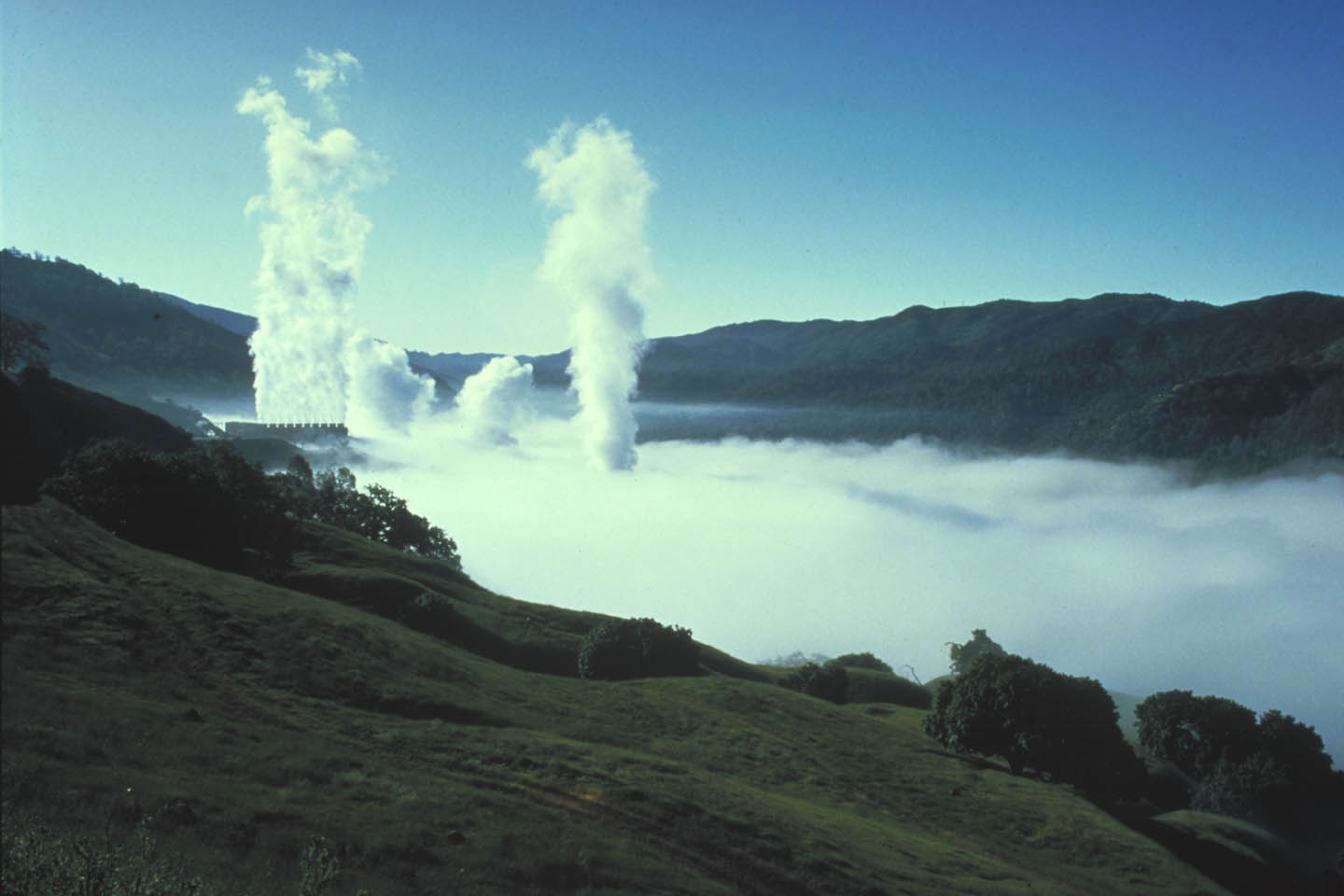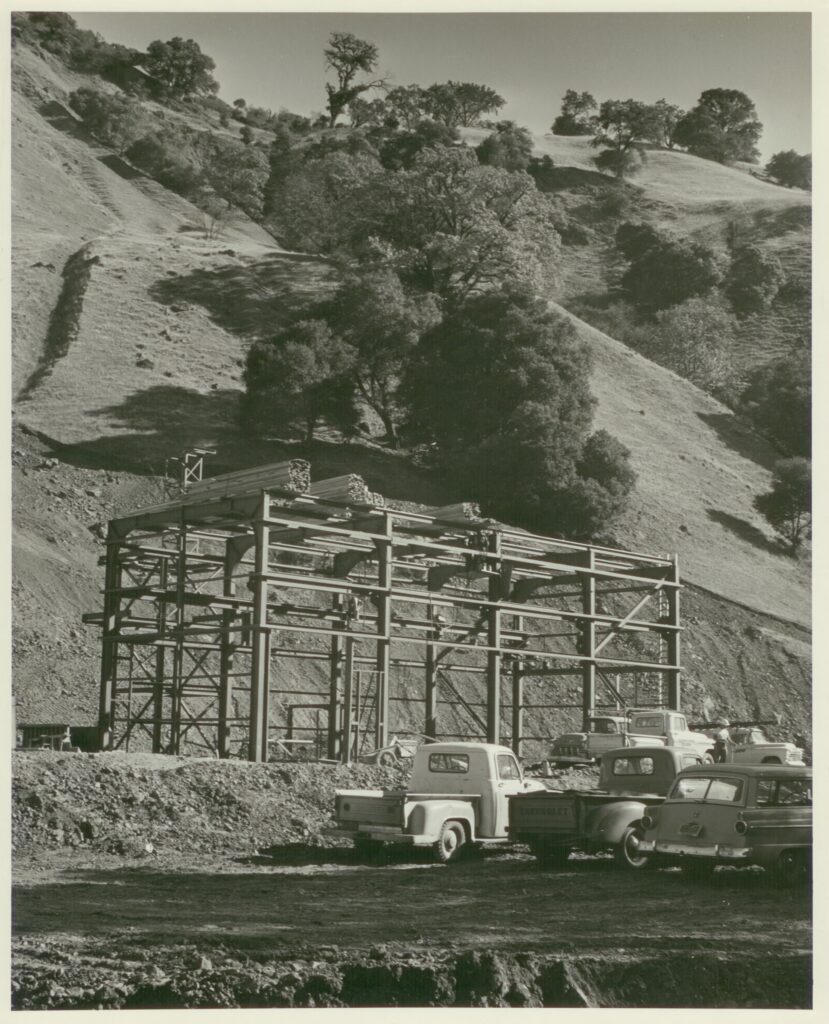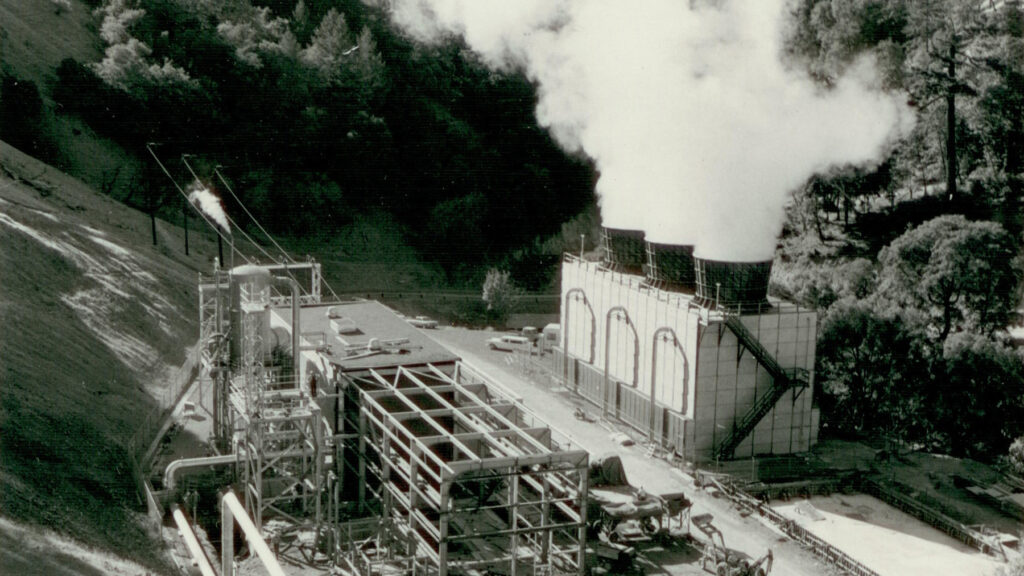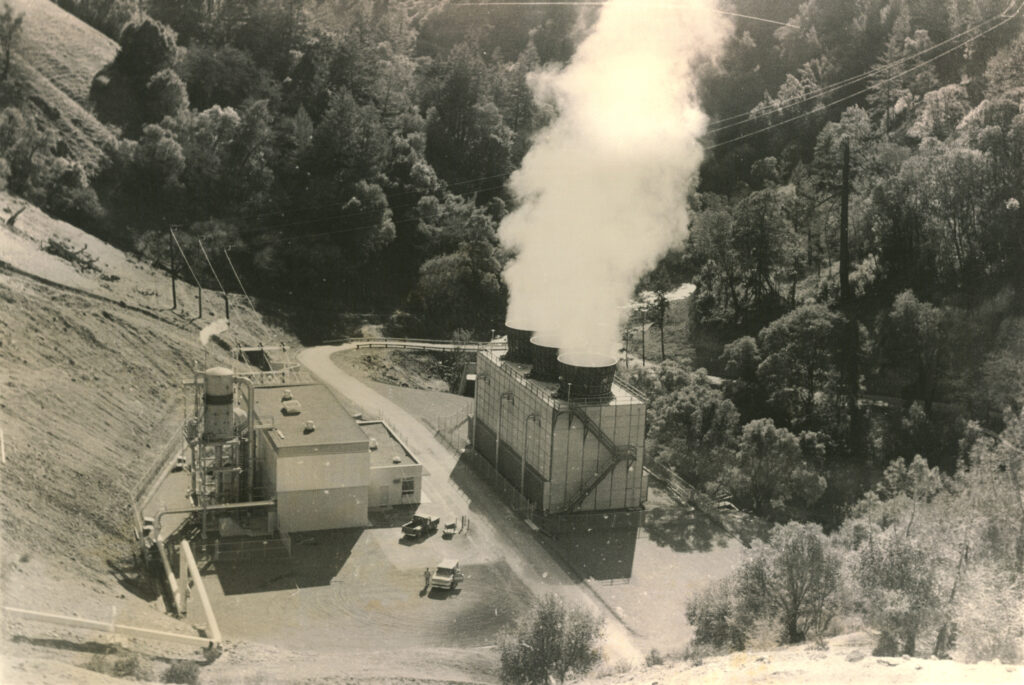The Geysers: A Very Special Place
The Geysers is a truly remarkable place.
A million years ago, a plume of molten magma intruded close to the Earth’s surface. The heat from this 1400˚F intrusion recrystallized the overlying rocks, making them hard and brittle, and causing them to fracture creating permeability. Subsequent magmatic activity over the next half-million years maintained high temperatures as water seeped down through fractures to form a hot water geothermal reservoir. About a quarter million years ago, the caprock over the ancestral Geysers reservoir fractured. As high-temperature water boiled away, steam eruptions followed, creating the steam reservoir that remains today.
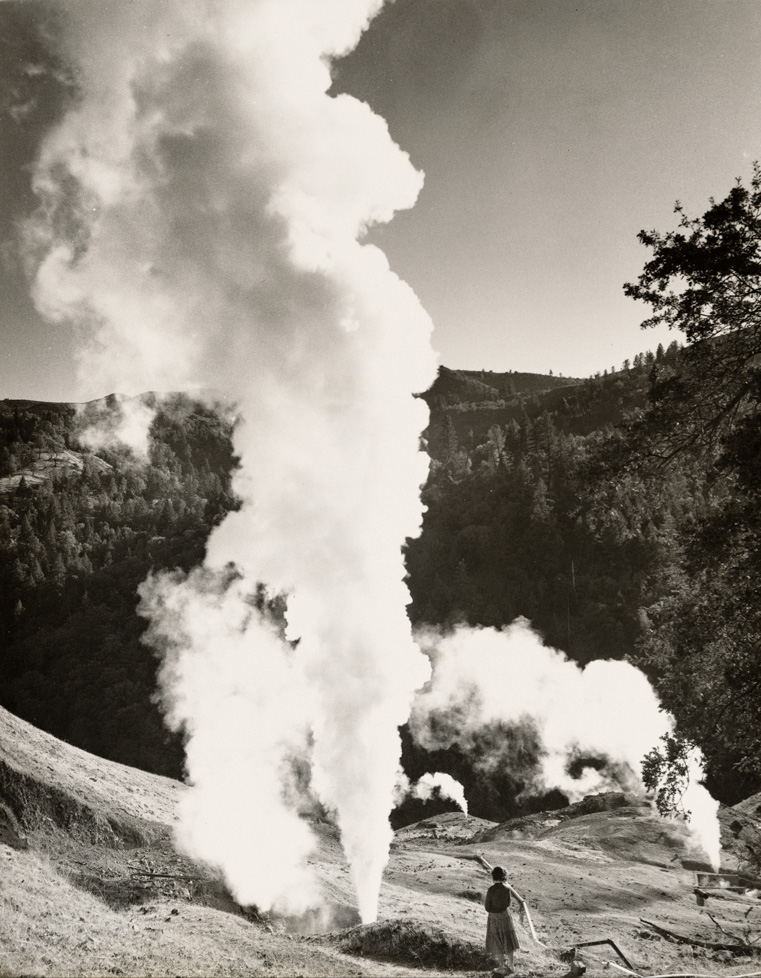
Native Americans, the first inhabitants of this region, visited the thermal areas for their healing powers and ceremonial importance. In the 1840s, The Geysers became a world-famous tourist destination. Although there are no actual geysers at this wonder-inspiring region, the inaccurate name stuck. In the past 65 years, The Geysers has emerged as the world leader in generating sustainable geothermal power using steam from deep beneath the Earth’s surface.
In honoring the history of The Geysers from its original discovery by Native Americans to its development as the premier geothermal energy production complex in the world, Calpine is dedicated to the sustainability of The Geysers.
12,000 years ago, Paleoindians arrive at The Geysers. They are the earliest-known human inhabitants of the region.
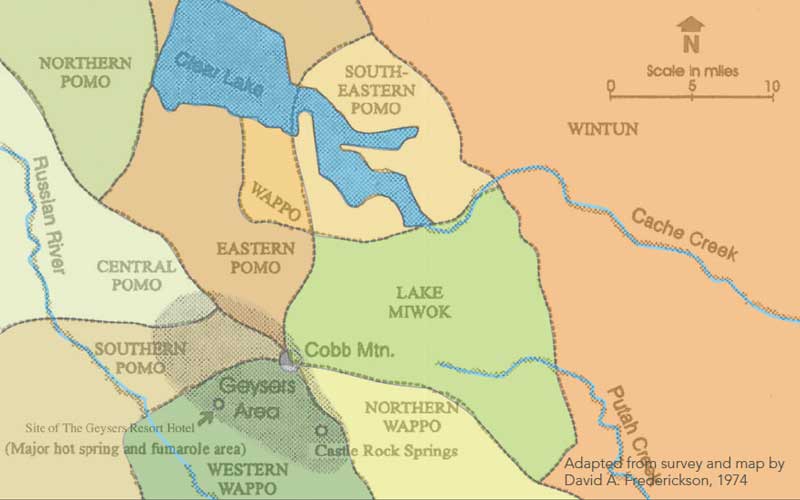
Early explorers record finding six Native American tribes living in the region. The tribes share access to The Geysers, which they use for healing and ceremony. No one knows how long these tribes had lived here, but we do know that their descendants still live in the area today.
While hunting a grizzly bear, William Bell Elliott stumbles upon the “Gates to Hades.” He calls the place “The Geysers,” though in fact there are no geysers here.
U.S. Boundary Commissioner John Bartlett creates the earliest known illustrations of The Geysers.
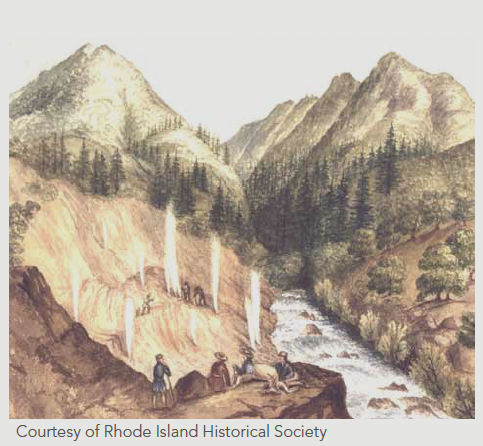
The Geysers is in its prime as a major tourist destination, with famous visitors from around the world.
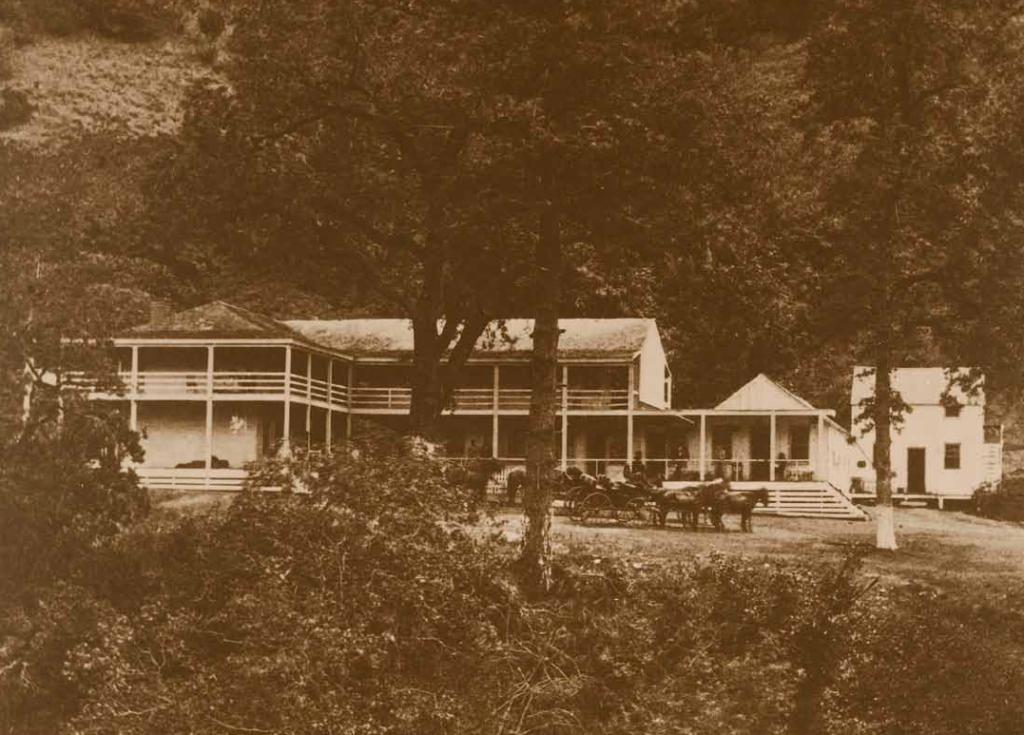
Sonoma County funds construction of a road to the mercury boomtown of Pine Flat, which years later in 2003 will be the route for the Santa Rosa Geysers Recharge Pipeline to The Geysers.
Mineral Water is bottled at The Geysers. It will be sold around the world.
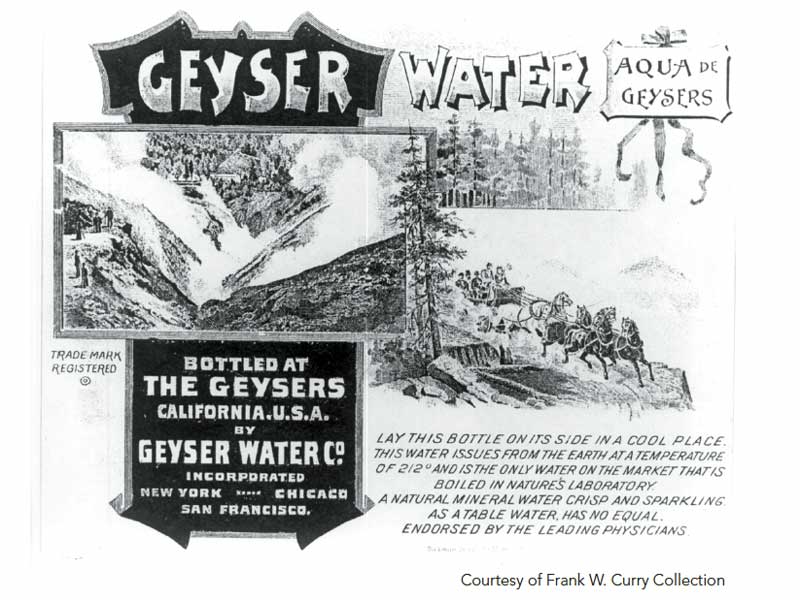
Utilizing a small steam-engine generator, John C. Grant successfully produces electricity at The Geysers. He acquires a lease for The Geysers Resort, hoping to generate electrical power from steam to sell to Healdsburg and Cloverdale.
Grant’s first attempt to drill a geothermal well results in a blowout. In 1922, Grant’s second well, only 200 feet deep, is the first successful geothermal well at The Geysers.
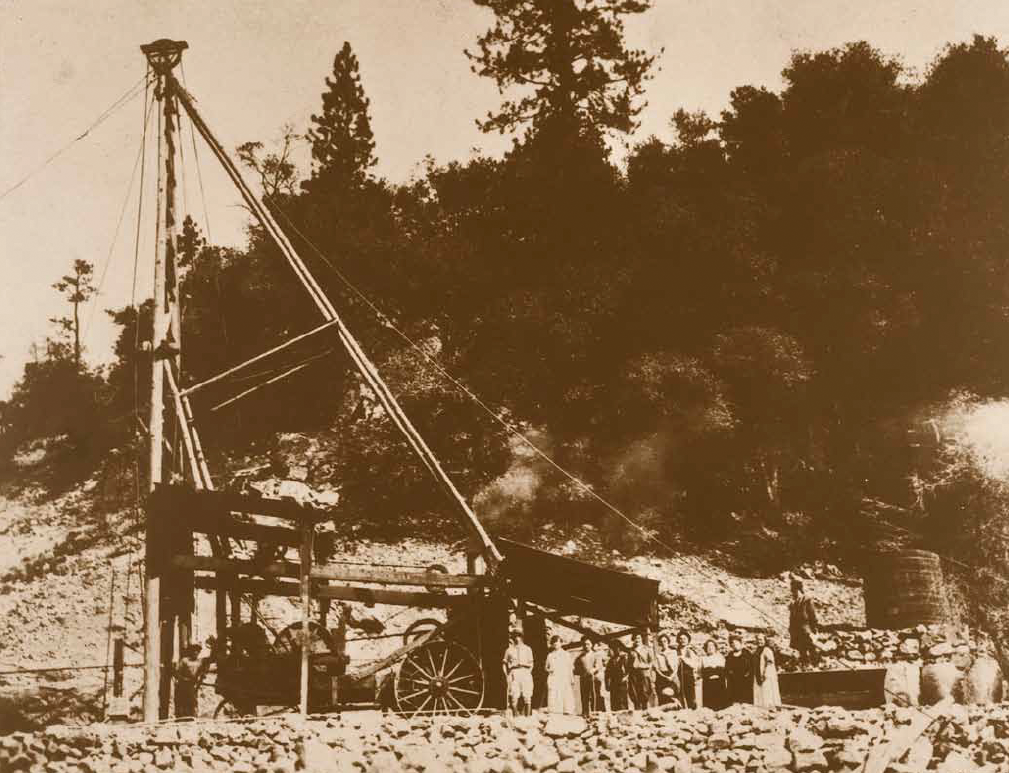
Grant and his family organize The Geysers Development Company and build a 35-kilowatt power plant, generating the first geothermal electricity in the Americas.
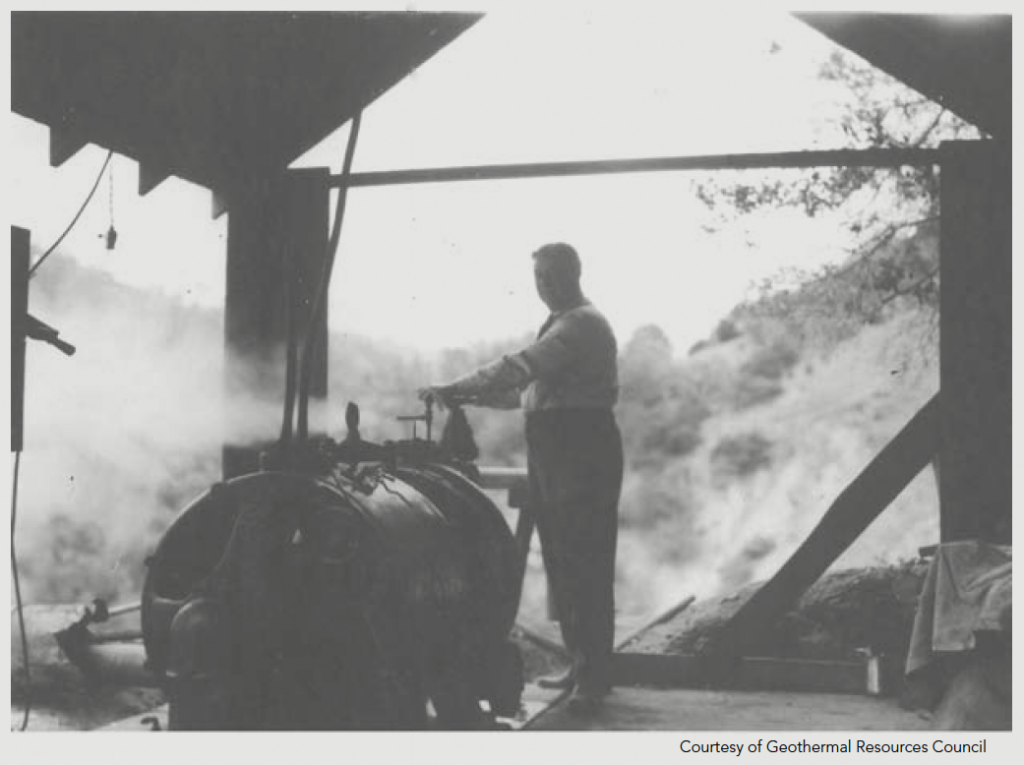
The Carnegie Institution does the first study of The Geysers steam reservoir utilizing data from the wells drilled by Grant.
Grant’s experiment with geothermal power fails due to competition from cheap oil, but it is only a temporary setback. In modern times, The Geysers Development Company goes on to become the most productive leaseholder in The Geysers.
Magma Power Company drills Magma 1, the first modern geothermal well at The Geysers, on land leased from The Geysers Development Company.
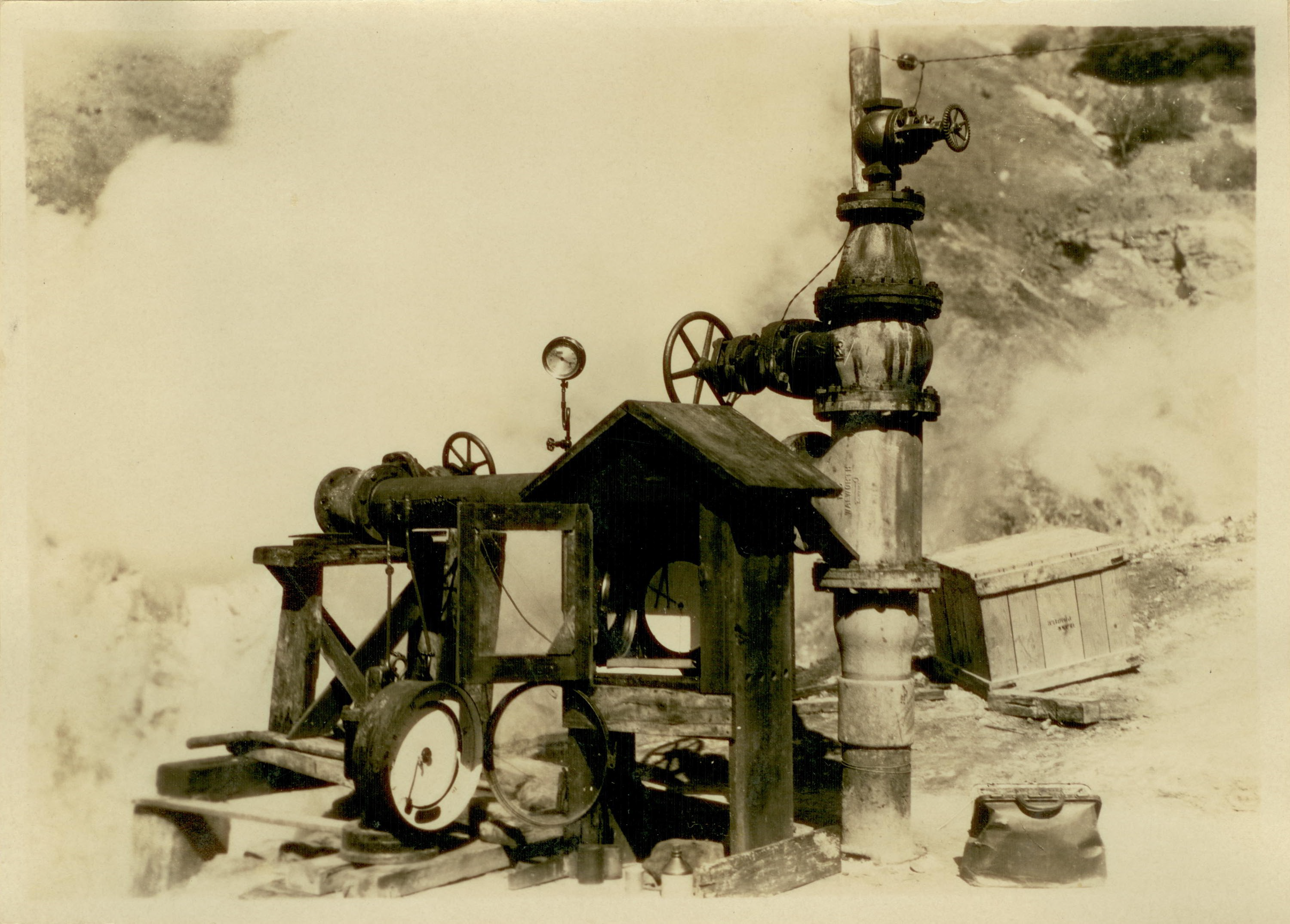
Thermal Power Company joins with Magma Power Company to form the joint development venture “Magma-Thermal.”
Pacific Gas and Electric Company (PG&E) agrees to purchase steam from Magma-Thermal.
Electrical generation capacity at The Geysers reaches 82 megawatts.
Geothermal wells reach 7,000 to 8,000 feet in depth. Development at The Geysers booms, attracting many different companies looking to operate the steamfield or build power plants.
Production peaks at The Geysers. Twenty-one power plants are in operation, with a total installed capacity of 2,043 megawatts. Over the next eight years, power generation rapidly declines as a result of pressure loss in the steam reservoir.
Calpine Corporation enters the power generation business at The Geysers by purchasing a one-megawatt interest in the 20-megawatt Aidlin power plant.
Geysers operators begin cooperative studies on the use of augmented water injection to create steam, sustain reservoir pressure and maintain power generation.
Calpine acquires two Geysers power plants, Bear Canyon and West Ford Flat, with a combined average output of 43 megawatts. Calpine expands its ownership interest in southeast Geysers steamfields.
Calpine, NCPA and Lake County Sanitation agree to construct the Southeast Geysers Effluent Pipeline (SEGEP), a 29-mile pipeline to deliver treated wastewater to The Geysers.
SEGEP is completed, bringing 9 million gallons a day of treated wastewater from Lake County to The Geysers, where it is injected into the reservoir to increase steam pressure.
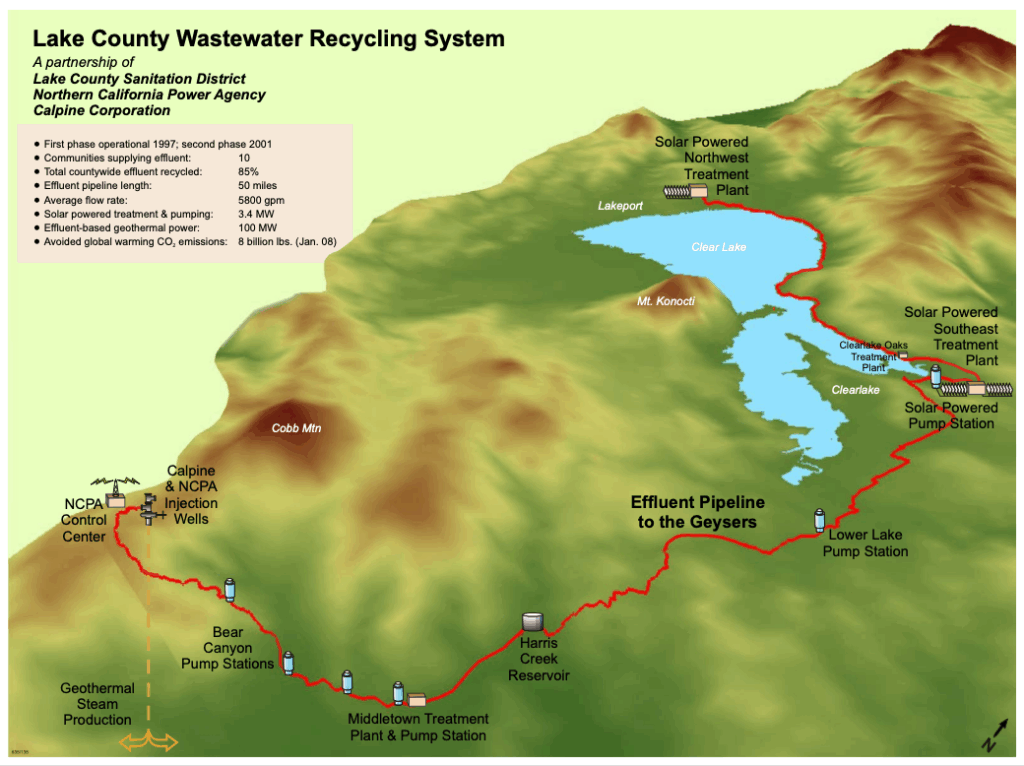
Calpine acquires the 72 megawatt Sonoma Power Plant from Sacramento Municipal Utilities District.
Calpine acquires 19 Geysers power plants and associated steamfields. Consolidated ownership eliminates contractual barriers, allowing a fieldwide approach to sustainably managing The Geysers geothermal resource. Calpine constructs pipeline inter-ties (cross ties) linking steamfields and power plants, minimizing the need to vent wells during plant outages. During power plant shutdowns, the steam is diverted to other plants, reducing the loss of electrical generation.
Calpine receives the California Department of Conservation’s Outstanding Lease and Facility Maintenance Award for Operations at The Geysers.
Calpine and the City of Santa Rosa complete a 40-mile pipeline, known as the Santa Rosa Geysers Recharge Project, bringing an average of 11 million gallons per day of treated wastewater to The Geysers and further helping to restore the steam reservoir.
With power plant upgrades and new sources of water to produce steam, Calpine’s electrical generation at The Geysers stabilizes and has remained so, generating approximately 725 megawatts of baseload, renewable energy for California.
Calpine receives California Energy Commission grant to study flexibility enhancements within The Geysers known geothermal area.
The Geysers quietly celebrates 60 years of commercial operations. Geothermal power operations continue, adapting to the implementation of safety measures and shelter-in-place orders during the COVID-19 pandemic.
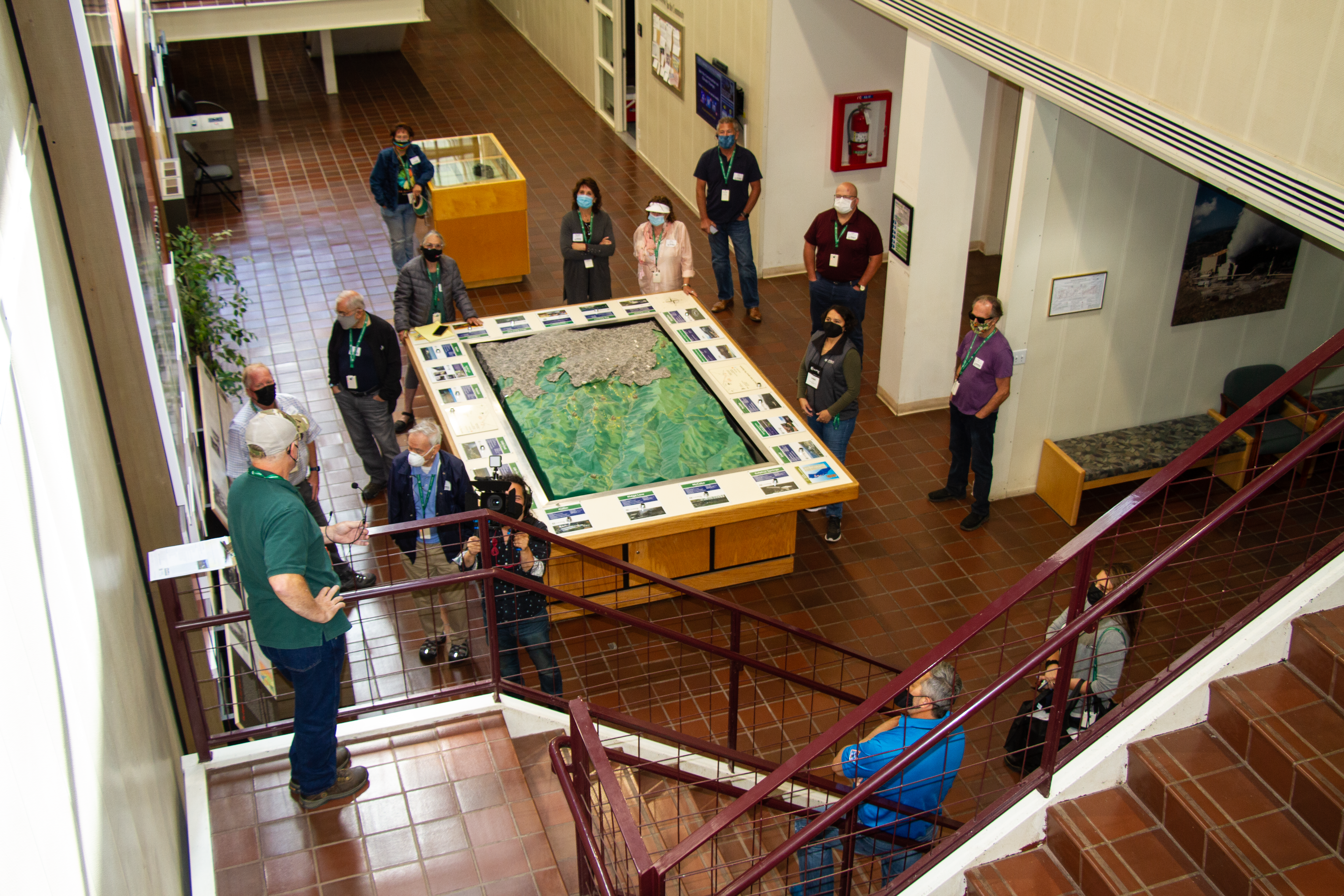
City of Santa Rosa & Calpine celebrate 20 years of successful partnership on the Santa Rosa Geysers Recharge Project.
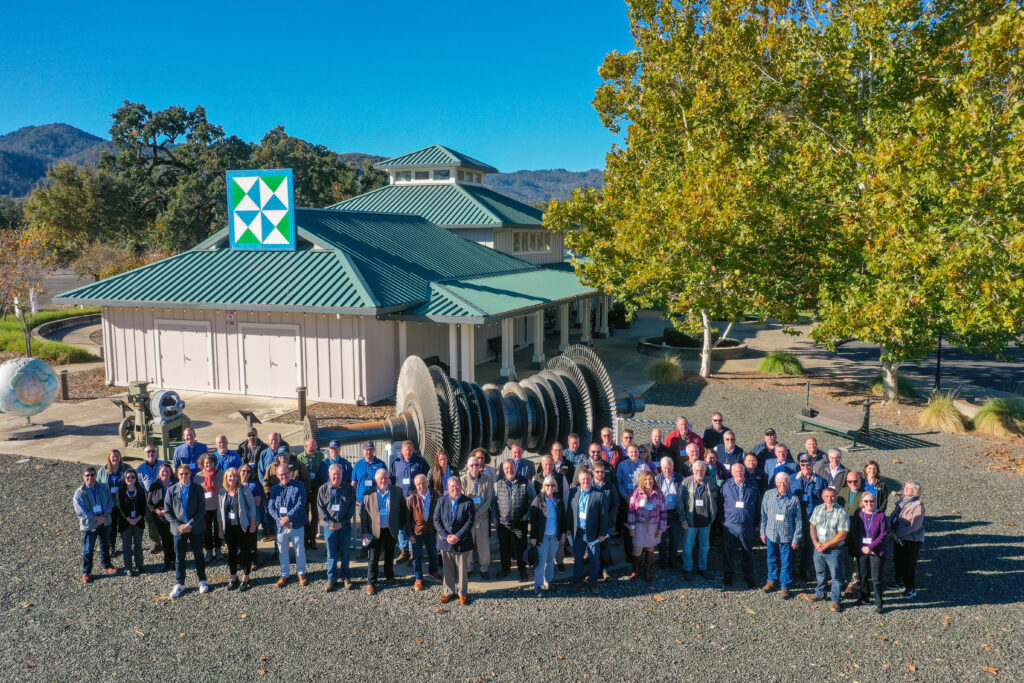
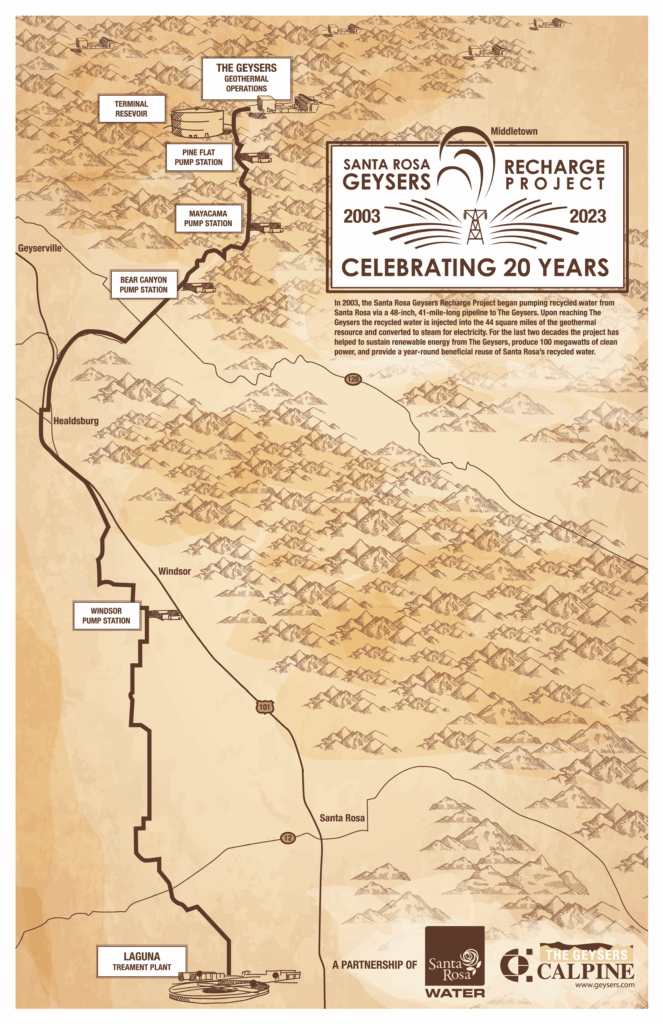
Calpine adds two Battery Energy Storage systems totaling 38 megawatts at the West Ford Flat & Bear Canyon sites.
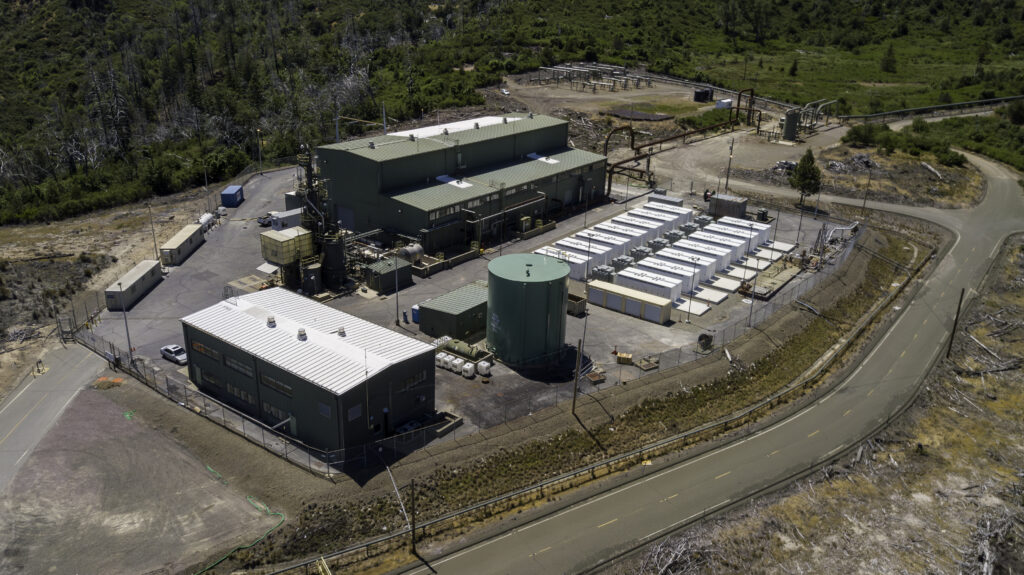
The first phase of Calpine’s North Geysers Incremental Development adds 7 MW of new geothermal generation.
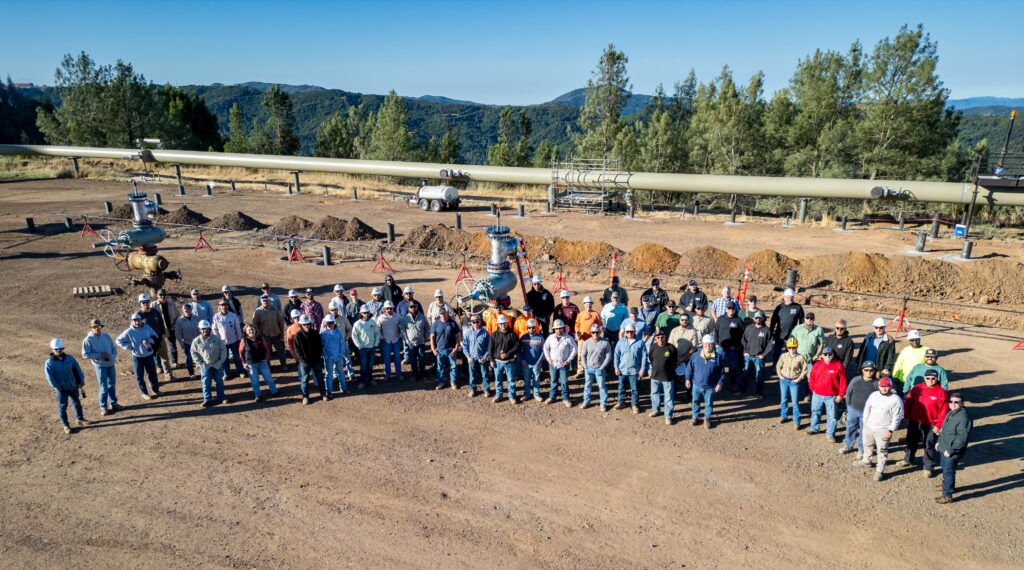
The Geysers celebrates 65 years of geothermal operations.
